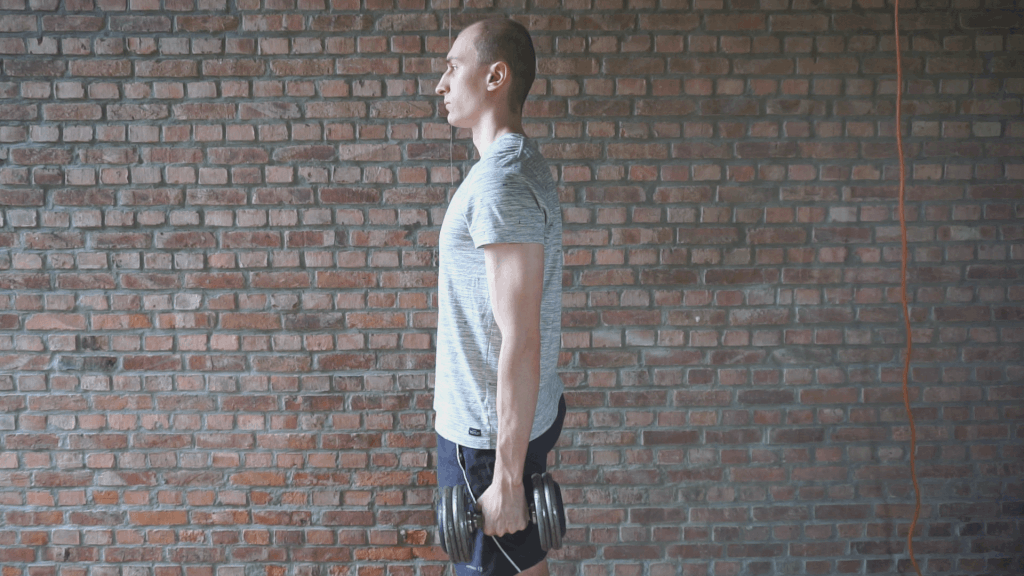The number of upper arm exercises is surprisingly big. Find out how to do hammer curls and what changes compared to other options.
Hammer curls are a type of bicep curl where your hand palms point to the center instead of forward/upward like with regular bicep curls.
The change in wrist angle influences what muscles you focus on due to the different places these attach to your arm bones.
More specifically, hammer curls work your biceps brachii (commonly just called biceps), brachialis (deeper upper arm muscle), and brachioradialis (forearm) muscles.
Compared to regular bicep curls you work the brachialis and brachioradialis to a larger extent.
Whether this muscle engagement of hammer curls is better or worse depends on your training goals and preferences.
How to do a hammer curl
To do this exercise you need a weight that you can hold with a neutral grip.
You typically use dumbbells but a cable machine, loop resistance bands, and possibly certain other weights are options too.
Once you have one of these, take the following steps to do a hammer curl:
- Stand up straight with a dumbbell in each hand. Point your hand palms to the center.
- Fold your arms as far as comfortable in a controlled motion. Keep your upper arms and the rest of your body in the same position.
- Slowly lower the dumbbells again until your arms are slightly less than stretched.

The main thing to keep in mind during hammer curls is keeping your upper arms in more or less the same position. This helps you work the main target muscles harder.
Muscles worked with hammer curls
The main muscles worked with hammer curls are your biceps brachii (commonly just called biceps), brachialis muscles which lie deeper in your upper arms, and brachioradialis, a forearm muscle.
Due to the different wrist angles, hammer curls will focus slightly more on the brachialis and brachioradialis than regular bicep curls.
If you struggle with keeping your upper arms in the same position, you can rest them on a weight bench or preacher bench.
That aside, keep sure you still implement good bicep curl reps, sets, and resistance for your training goals.
Hammer curl benefits
Some people question how useful this exercise can be but adding hammer curls to your routine can offer you some helpful benefits. Some of the most important ones include:
- Stronger muscles: Doing hammer curls the right ways can help you strengthen a variety of arm muscles.
- Bigger arm muscles: Besides improving strength, you could also grow your arm muscles with hammer curls. Many people consider this to be a benefit from a visual perspective.
- Can make daily activities easier: Increasing your grip strength with hammer curls can make daily activities like carrying things around easier.
- Could improve other lifts: In some pulling exercises, your grip strength could be a limiting factor. Doing hammer curls could help you avoid this.
Hammer curls are not the only exercise that offers these benefits. At the same time, they can still be a good option if you are interested in these effects.
Hammer curl alternatives
You can also consider certain hammer curl alternatives and pieces of fitness equipment if you are interested in the benefits above. A few examples are:
- Reverse curls
- Neutral grip pull-ups
- Zottman curls
- Using grip strength equipment
- Regular bicep curls
- Preacher curls
Why you like and don’t like hammer curls will influence which alternatives are optimal for your situation.
Are hammer curls a good exercise?
Hammer curls can be a good exercise for working your biceps brachii, brachialis, and brachioradialis (forearm) muscles.
In combination with enough resistance and a good exercise routine, you can grow and strengthen these muscles.
If that is your goal and you like doing hammer curls, this exercise can be a good addition to your workout program.
On the flip side, it is worth noting that other exercise can offer similar benefits too.
If you like these movements and their specific effects more, they can be good choices too.
